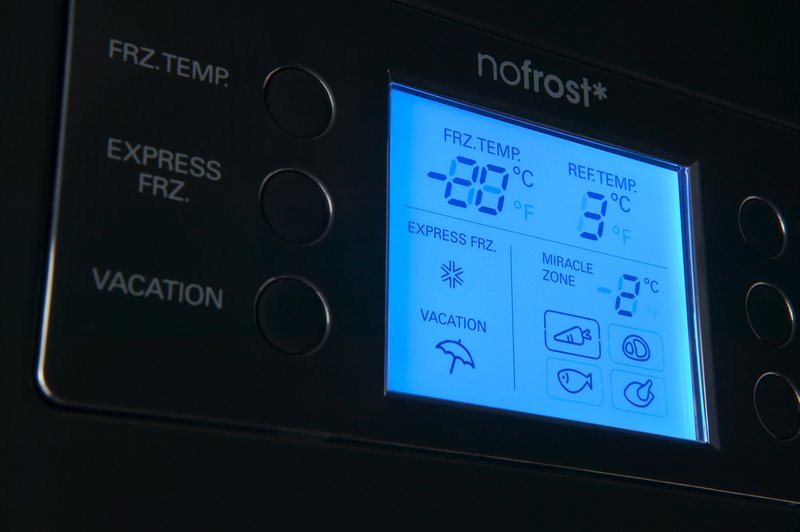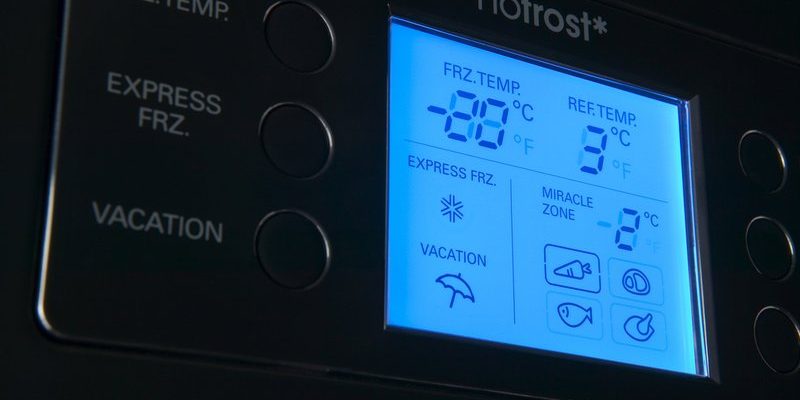
The SE error code stands for a “sensor error,” indicating that the refrigerator’s sensor isn’t communicating correctly with the control board. Think of the sensor as the refrigerator’s “eyes” and “ears,” picking up what’s happening inside and sending that data to the “brain,” the control board. When the sensor can’t transmit signals, it’s akin to having a broken phone line at home; you can’t place calls or receive them. Similarly, this error code is a call for help from your fridge, indicating it needs a bit of attention and care.
Understanding Sensor Malfunctions
Before diving into the nitty-gritty of fixing the problem, let’s talk about what the sensor in your refrigerator does. The sensor monitors the internal temperature, ensuring that your fridge keeps your food perfectly chilled. Imagine if a thermostat in your house just stopped working—you’d either freeze or start sweating, depending on the weather outside. That’s exactly what happens when the sensor has an issue; it can’t tell the fridge to cool more or less effectively.
Commonly, the SE error comes up when the sensor becomes faulty or disconnected. It’s like your sensor is wearing earmuffs—it’s trying to hear the temperature but can’t quite get it right. The sensor can either be physically damaged, maybe bumped out of place by an enthusiastic grocery restock, or it might have developed a fault due to normal wear and tear. Another possibility is that the sensor’s electrical connection has become loose, much like a lamp flickering when its plug isn’t quite snug in the outlet.
You might be wondering, “How can I spot a sensor glitch?” Well, apart from the error code, signs like erratic temperature changes or your fridge not cooling properly could indicate an issue with the sensor. If your milk isn’t as cold as it should be, or your veggies feel like they’re living in a sauna, the sensor might be the culprit. So how can you tackle this? A careful inspection of the sensor and its connections should be your first step.
Control Board Connection Issues
Now, let’s move on to the control board, the refrigerator’s command center. The control board processes all the data from the sensor and decides what action the fridge should take next. If the control board isn’t receiving the right signals, it’s like trying to solve a puzzle with missing pieces—it just can’t work properly.
One of the most frequent causes of control board issues is a simple one: loose or faulty wiring between the sensor and the board. Picture this like a game of telephone; if the line is broken, the message gets lost or distorted. This could occur due to vibrations during operation or even from moving the appliance around. When wiring is the problem, securely reseating the connections often sets things right.
Another common issue can be a malfunctioning control board itself. Electrical components can sometimes fail, just like when a light bulb burns out. If you’re confident in your DIY skills, you might be able to replace it on your own. However, given the board’s complexity, enlisting a professional refrigerator technician might be the safer bet. They can ensure everything’s in ship shape and sometimes even troubleshoot other potential issues that might not be immediately apparent.
Environmental Factors and Usage
Beyond the refrigerator itself, let’s not forget the impact of its environment and how you use it. External factors like room temperature and the positioning of your fridge can also influence its performance and contribute to the SE error.
The refrigerator’s sensor is sensitive to the surrounding environment. If placed in a room that’s too warm or too cold, it can throw the sensor off, much like how you’d feel if you dressed for a blizzard and walked into a summery beach. Make sure your fridge is placed in an area with a stable temperature, away from direct sunlight or heat sources.
Moreover, overloading the refrigerator can also lead to issues. If it’s crammed too full, air can’t circulate properly, and the sensor might not get an accurate reading. It’s like blocking the view of your car’s rearview mirror with a mountain of luggage; you just can’t see what’s happening clearly. Keeping a little breathing room for air to flow can work wonders and help prevent the SE error from cropping up again.
Next Steps and Preventative Tips
So, what’s next once you encounter an SE error? Start by checking the simple stuff: inspect the sensor for any visible damage and ensure all connections are snug. If you’re comfortable with it, a gentle reset of the refrigerator might clear the error. You can do this by unplugging the unit for a few minutes and giving it a restart, much like rebooting your phone when it acts up.
To keep those pesky errors at bay, regular maintenance is key. Every few months, take a peek inside your fridge for any dust or debris around the sensor and clean as necessary. Keeping the refrigerator at a moderate load ensures proper air circulation, and making sure it stands level can prevent many operational issues.
Remember, while DIY fixes can resolve many issues, don’t hesitate to seek professional help if the problem persists. A certified technician can provide peace of mind and ensure your fridge stays in tip-top shape.
In the end, handling an SE error doesn’t have to be daunting. With a little patience and a few checks, your Frigidaire refrigerator can return to keeping your groceries cool and fresh in no time.
